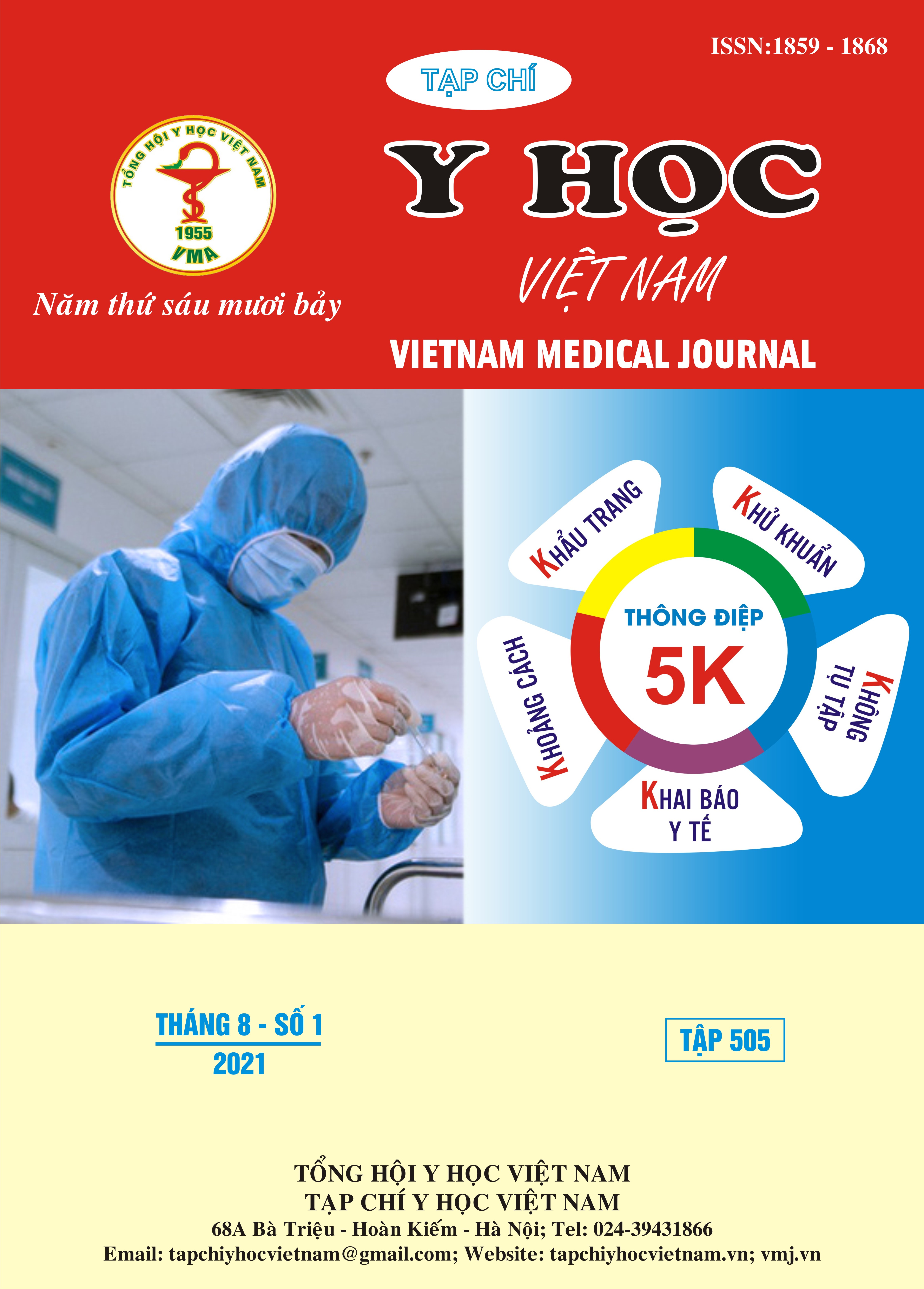OUTCOMES OF MILD TRAUMATIC BRAIN INJURY TREATMENT AT THAI BINH GENERAL HOSPITAL
Main Article Content
Abstract
Objectives: To assess clinical characteristics, lesions on CT scan images and outcomes of mild traumatic brain injury treatment. Methods: A descriptive cross-sectional study was conducted in 501 patients with mild traumatic brain injury (GCS from 13-15 points) treated at Neuro-Spinal Surgery Department of Thai Binh General Hospital in the period from February to May, September 2020. Results: 501 patients, including 344 males (68.7%), 157 females (31.3%). Median age: 44.96 ± 21.92 years old; the youngest: 2 years old; the oldest: 96; (19-59) age group accounted for (57.6%); (60-96) age group made up (29.5%). Traffic accidents were in the highest rate (60.9%), domestic accidents (29.5%), occupational accidents (5.0%). Clinical symptoms: headache was comprised of (88.6%); scalp wounds (38.9%); scalp hematomas (24.8%); vomiting (20.0%). 64.3% of patients with mild traumatic brain injuries who were scanned with CT scan had intracranial lesions, of which 1 lesion accounted for 45.3%, 2 combined lesions formed (15.0%), from 3 combined lesions and over contributed (4.0%). The majority of patients were treated non-operatively, only 42 patients (8.4%) during follow-up and treatment worsened and had indications for surgery. Most of the hospital discharge results were good, accounting for (97.6%), but there were still (0.4%) having vegetative state and death (0.2%). Conclusion: Mild traumatic brain injuries with intracranial hematomas amounted to (64.3%), most of the medication treatment gave good outcomes, however, the progress was complicated, there were still patients who developed severe conditions which left severe sequelae and deaths.
Article Details
Keywords
Mild traumatic brain injuries, Traumatic brain injuries, Road traffic accidents
References
2. Phạm Tỵ (2010), Điều trị chấn thương sọ não nhẹ, Y học Việt Nam tháng 6-số 1/2010.
3. Timothy E Sweeney , và cộng sự (2015), Prediction of neurosurgical intervention after mild traumatic brain injury using the national trauma data bank. World J Emerg Surg. 2015 Jun 6;10:23. doi: 10.1186/s13017-015-0017-6.
4. Pierre Borczuk và cộng sự (2018), Rapid Discharge After Interfacility Transfer for Mild Traumatic Intracranial Hemorrhage: Frequency and Associated Factors. West J Emerg Med. 2019 Mar;20(2):307-315.
5. Amir Saied Seddighi và cộng sự (2013), Factors predicting early deterioration in mild brain trauma: a prospective study. Brain Inj 2013;27(13-14):1666-70. doi: 10.3109/02699052.2013.830333.


